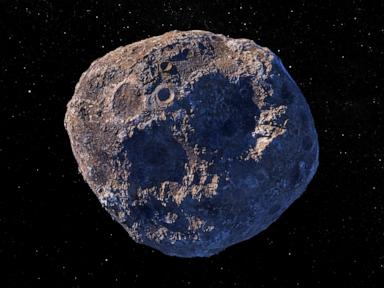
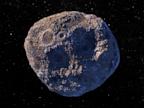

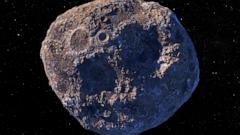
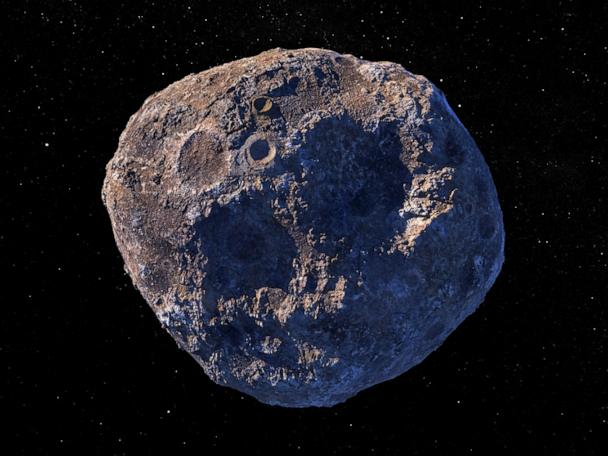
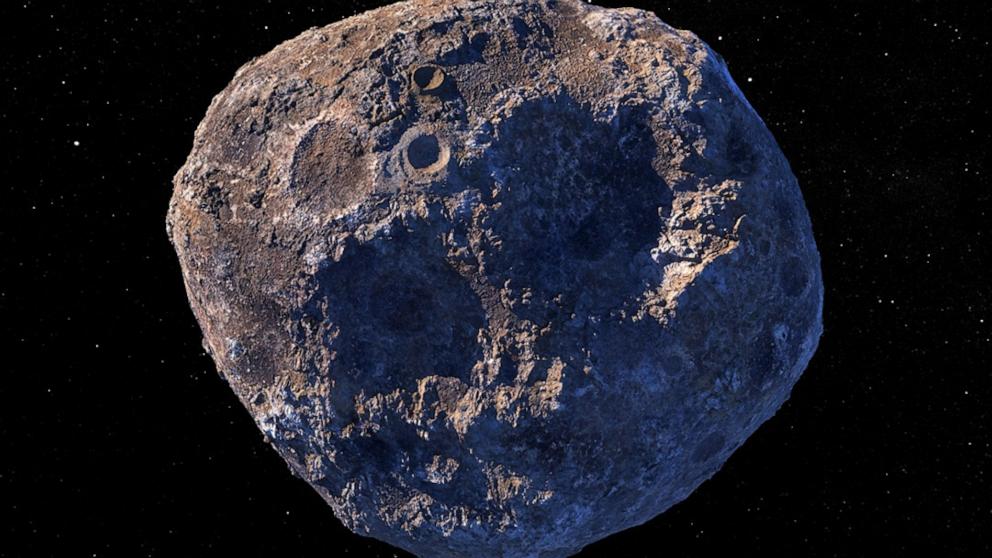
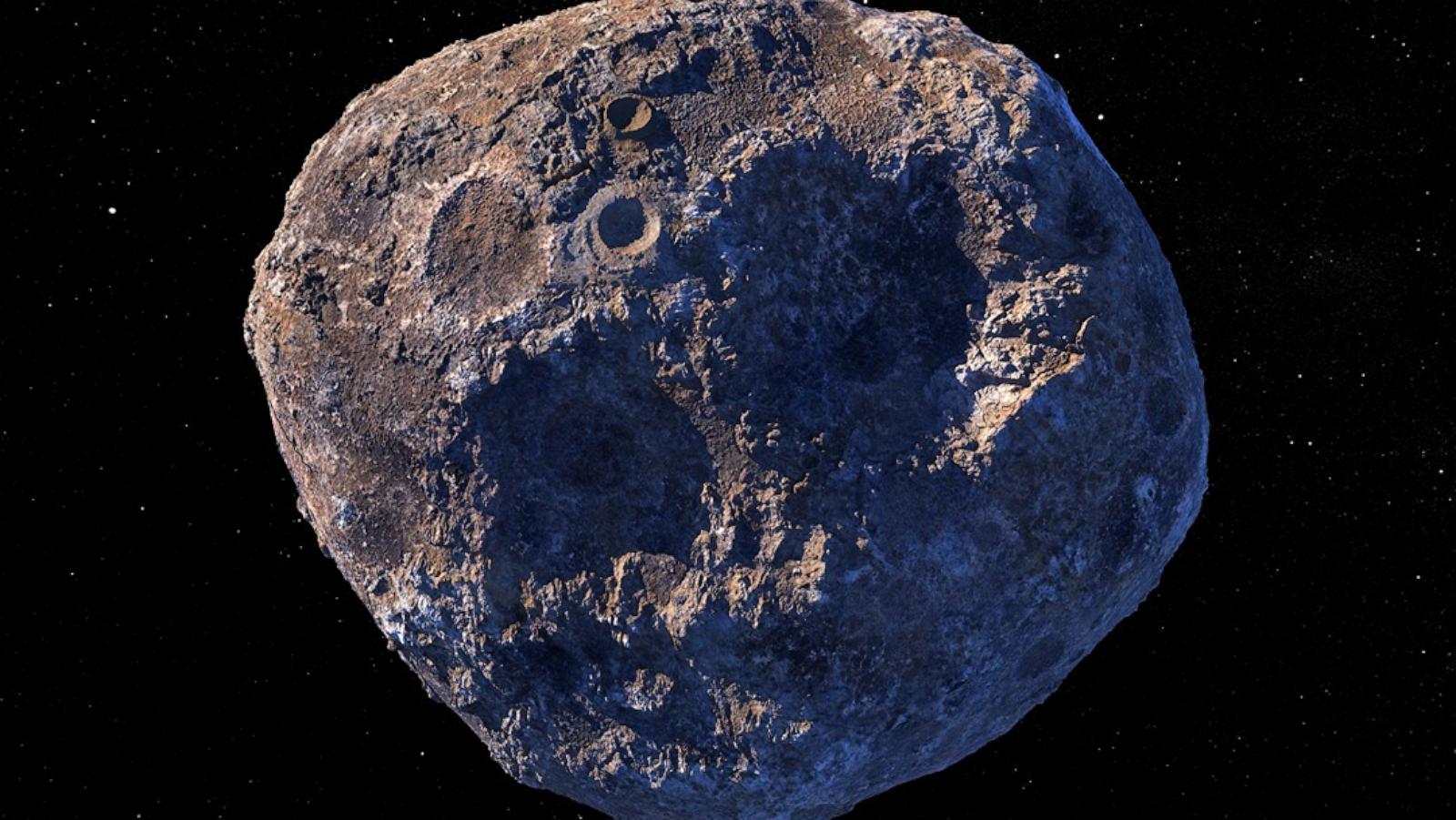
A large asteroid could pass close enough to Earth within the next decade that there’s a chance it could strike the planet, according to NASA.
The space rock, named 2024 YR4, is between 130 feet and 330 feet in diameter and could hit Earth in 2032, according to NASA’s Center for Near Earth Object Studies.
But that likelihood is low, with just a 1.3% chance that the asteroid could make direct impact on the planet on Dec. 22, 2032, according to space experts.
Astronomers monitoring the ATLAS telescope at the University of Hawaii first spotted the asteroid as it was moving away from Earth on Dec. 27 and reported it to the International Astronomical Union Minor Planet Center, which determined it had never before been seen, Kelly Fast, a planetary defense officer at NASA, told ABC News.
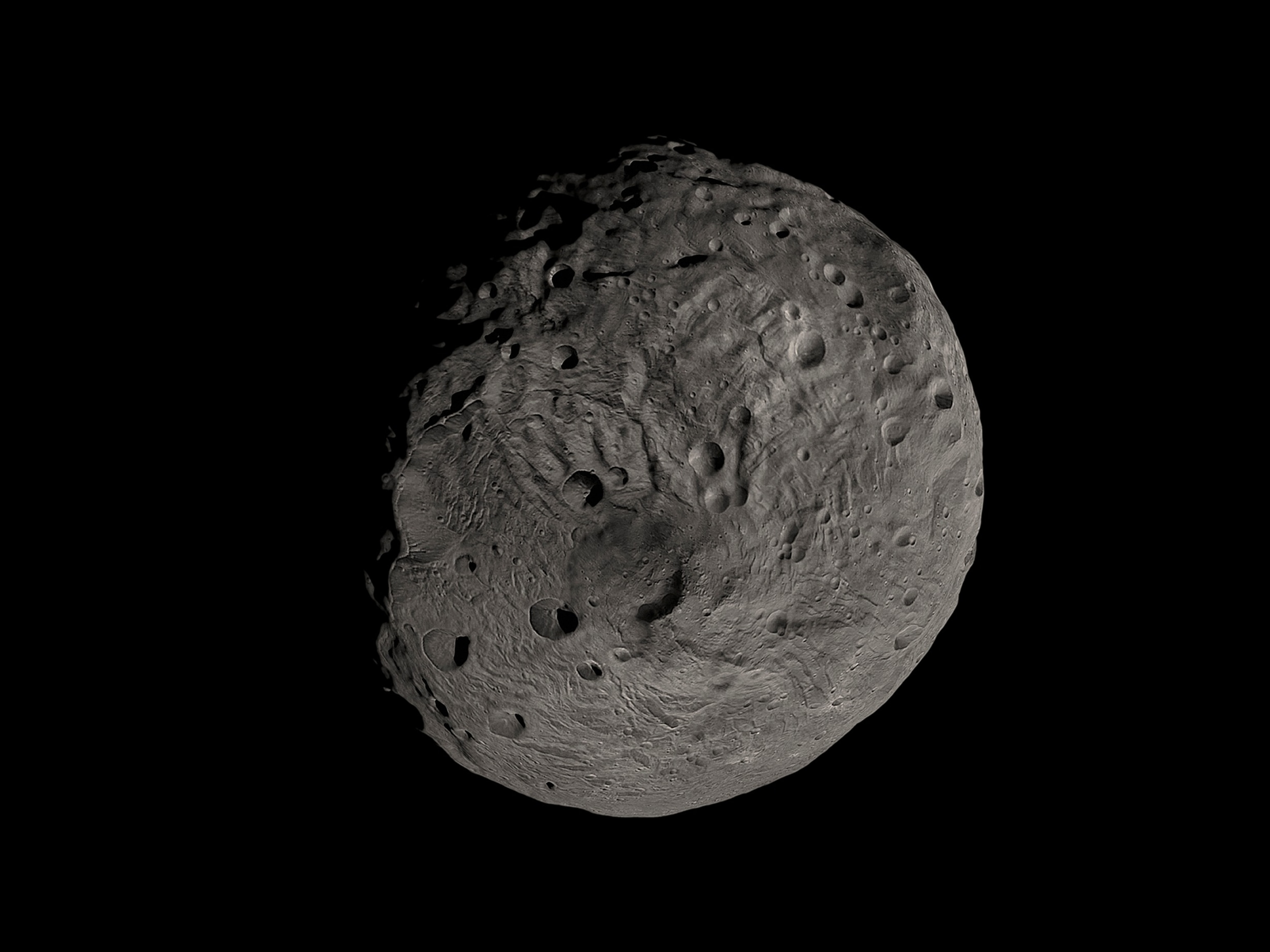
South polar region of the giant asteroid Vesta.
Nasa/jPL-Caltech/Getty Images
Asteroid 2024 YR4 has an “interesting” orbit, Fast said. The elongated path takes the asteroid around the sun and into Earth’s vicinity before it ventures far out between the orbits of Mars and Jupiter, she said.
“In the past, even though it’s passed through the inner solar system before, it didn’t always pass by where the Earth happened to be, where it could be picked up easily,” Fast said, explaining why the asteroid was only recently discovered.
Because of its unique orbit, astronomers are trying to learn everything they can about 2024 YR4 before it disappears out of sight after April, Fast said. It’s not expected to be visible again until 2028.
The end of 2032 is when astronomers predict 2024 YR will come close to Earth again, Fast said, adding that further observations are expected to provide data to support the likelihood that 2024 YR4 will avoid hitting Earth.
“The worldwide community is continuing to take observations,” Fast said. “it can’t all happen in a day, because the asteroid has to keep moving in the sky.”
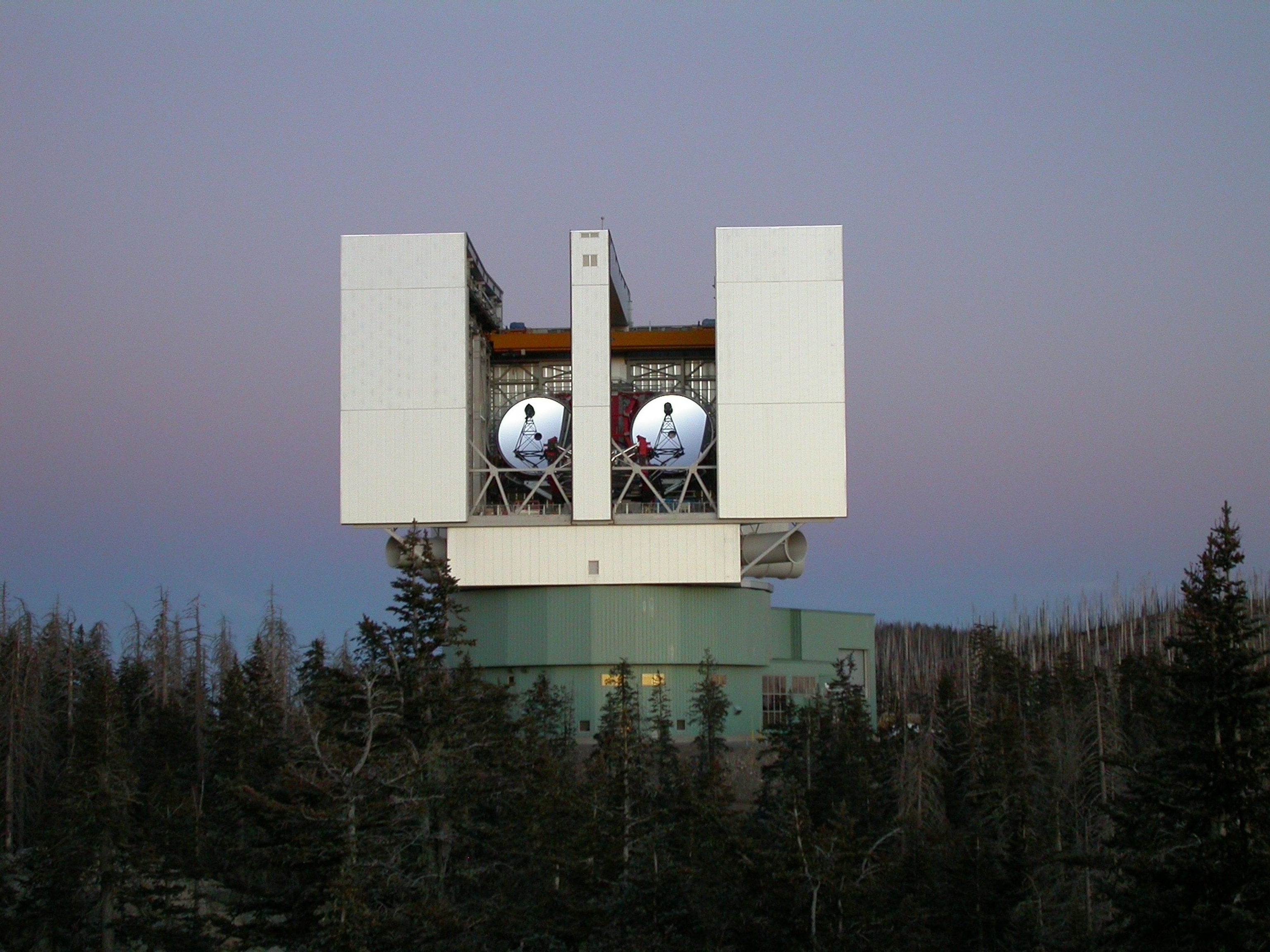
The Large Binocular Telescope Interferometer, or LBTI, is a ground-based instrument connecting two 8-meter class telescopes on Mount Graham in Arizona to form the largest single-mount telescope in the world.
NASA
Astronomers estimate the size of asteroids based on how much light they reflect. Based on current data, 2024 YR is large enough for it to potentially cause localized damage were it to strike a populated city, Fast said.
In 1908, the Tunguska asteroid, which was a similar size, flattened trees over an area of about 1,250 miles after it exploded in the skies over Siberia.
Congress has tasked NASA with locating asteroids larger than 450 feet in length – large enough to potentially do “regional” damage were it to strike the planet, Fast said.
Smaller asteroids, within a few yards in diameter, tend to be disintegrated by Earth’s atmosphere and transformed into fireballs, Fast said.
NASA’s Jet Propulsion Laboratory (JPL) Asteroid Watch tracks asteroids and comets that will make relatively close approaches to Earth. Five asteroids are forecast to pass near Earth in the coming days.
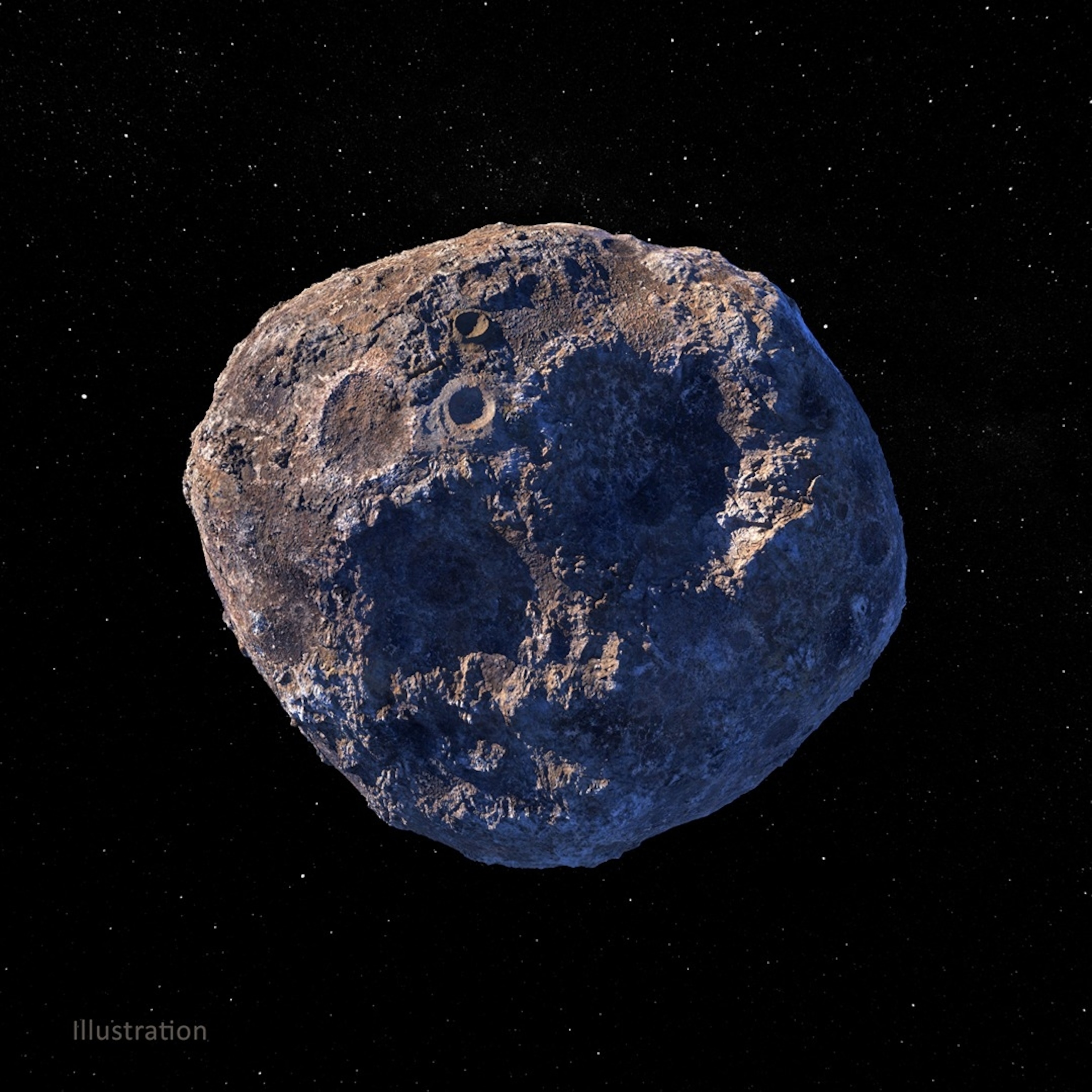
Asteroid Psyche (Illustration).
NASA
On Friday, two asteroids are expected to pass near Earth, according to the updated list. Asteroid 2025 BR2, with JPL describes as an “airplane-size” space rock about 67 feet long, is expected to pass within 3.21 million miles of Earth, while another asteroid, 2015 DJ155 – two-and-a-half times as large, at 170 feet – is expected to pass within 4.42 million miles of Earth.
Two more asteroids, 2025 BG4 and 2025 BR7 – 75 and 100 feet in length, respectively – are forecast to pass within 3.09 million miles and 3.58 million miles of Earth, respectively, also on Friday.
On Sunday, 2025 BU, which JPL describe as being about the size of a house, at around 54 feet in length, is predicted to pass within 2.1 million miles of Earth, according to Asteroid Watch.
Fast emphasized that although these asteroids are passing “relatively” close to Earth, they’re still a great distance away. The moon itself is fewer than 240,000 miles from Earth and there are often asteroids passing Earth within that distance, she said.
“Space is big, and so that’s very far away,” Fast said.

